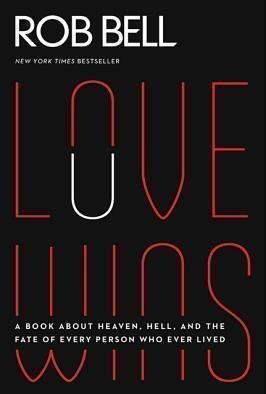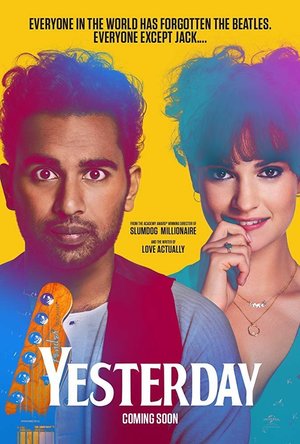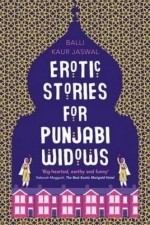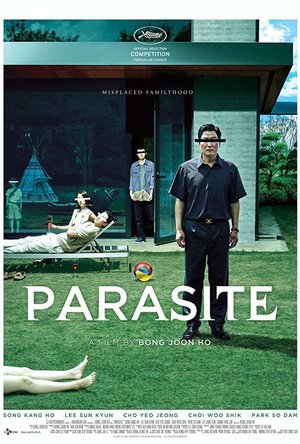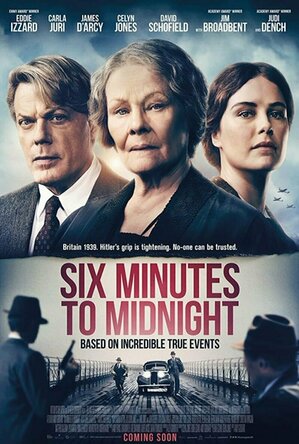
Inner Perspectives: Guideposts for the Spiritual Journey
Podcast
Elizabeth Clare Prophet, modern mystic and pioneer in New Age spirituality, answers more than 300...

Home yoga practice
Health & Fitness and Lifestyle
App
What is preventing you from living your life to the fullest TODAY? Body aches? Stress? Your mood? ...
There are a few major errors in Love Wins, which leads to his making other more minor mistakes. The first error is giving precedence to certain biblical themes (to the exclusion of others) over clear and specific biblical teaching. Bell makes much of themes like restoration in Scripture, but ignores themes of final punishment. By dwelling on those themes, he can transition to reading them into texts where they don't belong without being found out by biblical illiterates, such as Jesus' claim that Sodom and Gomorrah will fare better on the day of judgement than cities which rejected the direct revelation of God in Jesus Christ. Instead of reading this in its obvious sense-- that there are degrees of punishment on the final day and those who reject direct revelation of Jesus will suffer most-- he understands Jesus to be saying that there is a great deal of hope for Sodom and Gomorrah's salvation-- that their punishment was corrective instead of destructive. Even though he doesn't get anywhere close to proving his case (certainly only God knows whether or not some in Sodom will be saved, but the story of Abraham bargaining would suggest otherwise), he seems to fall back on the emotionally-driven claim that God saving everyone is a "better story" than damning some and saving others.
On his overuse of the word "story," it is one example where Bell is obnoxiously post-modern and emergent. He uses the word "story/stories" in his short book 138 times. For a book of around 200 pages, large font, and constantly skipped lines/single words on their own lines*, that's an impressive display of post-modernism.
Another major error is that he conflates a strong exclusivism with eternal conscious punishment which has the effect that when he attacks one, he is in effect attacking the other, making his job easier. In addition, he ignores annihilationism as an alternative to eternal conscious torment, which also strengthens the emotional pull of his position, since it is contrasted with an eternal conscious punishment where God damns people for never being able to hear the name of Jesus. (note: while I am annoyed at Bell's misrepresentations of eternal conscious torment, I am myself an annihilationist)
Bell explains that God will eventually win everyone over, but it must be of their accord. However, he doesn't explain how it is that everyone will be saved of their own free will. For emotional effect, Bell criticizes the eternal conscious hell camp with having a God that would turn his back on people in hell who are repenting and turning to God. Of course, this assumes that sinners turn to God on their own instead of by His grace. Bell here appears to be a Pelagian, or else doesn't know enough about soteriology to make such distinctions (a terrifying prospect for a Pastor). In any case, this is another example where he is misrepresenting eternal conscious hell proponents (the first I mentioned was when he claimed they were all strict exclusivists), which makes his book far harder to take seriously.
One strange and interesting point that Rob Bell makes comes from making the afterlife analogous to the parable of the prodigal son. He claims that hell is not being cast out of "the party," (despite Jesus' parable about the marriage supper being like a party where people are cast out of) but being at the party but not enjoying it. "Hell is being at the party," Bell claims. The message to take from that is never go to one of Rob Bell's parties.
*Bell's book is filled with skipped lines and one word sentences sitting on their own lines. I suppose this is done for dramatic effect-- indicating places where Bell would pause if this were one of his Nooma videos. However, it tends to just look irritating and faux artsy. I mostly listened to the book on Kindle's text-to-speech feature, and I could still tell when he was doing it. Like,
You put a series of short sentences on their own lines to make a point?
Really?
You do that?
And it's repetitive?
Extremely?
And annoying?
Darren (1599 KP) rated Yesterday (2019) in Movies
Dec 25, 2019
Story: Yesterday starts as we meet musician Jack Malik (Patel) who when he isn’t performing, works a dead-end job in a cash-n-carry. Jack gets his first festival in Latitude Festival thanks to his manager Ellie Appleton (James), which makes Jack realise he might walk away from music, until on his way home a shocking event around the world sees all power down for 12 seconds and Jack gets hit by a bus, waking up in a world where The Beatles never existed.
Jack uses the ideas that The Beatles never existed to start singing the songs, which sudden thrusts the spotlight onto the young singer, who sudden burst into international stardom, only can he live with the knowledge of the music he is singing is from the most famous band in the world.
Thoughts on Yesterday
Characters – Jack Malik is a small-time musician who only performs in his own free time, while trying to balance a part-time job in a warehouse. He does have talent, only he hasn’t been discovered yet, he is about to give up when he gets hit by a bus in a freak event around the world. He wakes up to discover he is the only person to have heard of The Beatles and decides to use this knowledge to give music on more crack, where his rise to super stardom is sudden and he must learn to adapt to this new career. Ellie Appleton has been the best friend, manager, rodeo and driver for his music career, secretly in love with him, unable to give up her teaching career to follow his new success. Rocky has been involved in music only he tends to let people down, he is however the only person that Jack can turn to for help for his new stardom. We get to meet Jack’s parents who have always supported him, Ed Sheeran playing himself discovering the new talent in Jack and the manager who takes Jack to the next level with his debut album.
Performances – Himesh Patel is brilliant in the leading role where he handles the singing with ease as well as the troubles that his character goes through in his sudden rise to fame. Lily James as the girl next door figure is wonderful to watch to, never looking out of place in the manager role. The rest of the cast do nothing wrong, you might see a couple of weakness in some of the performances in the film though.
Story – The story follows a musician that is involved in an accident only to discover that when he wakes up, The Beatles don’t exist, using this knowledge to make himself a mega star, while dealing with his own love problems. This is a story that does work if things are kept just around the idea of The Beatles not being around, where the story does seem to use as a little joke, other major products or bands also haven’t existed either, they are only used for jokes rather than being proper points in the story. Away from that weak point we do get to see the struggling to deal with sudden fame and the guilt for using the songs of somebody he idolises. This story is one that can be enjoyed even if you are not a Beatles fan too.
Comedy/Musical/Romance – The comedy in the film will get laughs where it needs to, we aren’t given constant jokes either, with the music side of the film playing into the strengths of all Beatles fans who will get to enjoy their favourites. The romance in the film does take centre stage, with how the two are left to wonder what if through their lives, showing how people are tempted to let people go or not for stardom.
Settings – The film uses the small town where Jack is from, which shows the struggle of a small town musician, LA where things move so fast and Liverpool where the inspiration can be found.
Scene of the Movie – Wembley.
That Moment That Annoyed Me – The other random disappearing products, just being a joke, rather than a point in the story.
Final Thoughts – This is an enjoyable comedy musical, that will show the importance of love in the world, how music can make people famous and just how far people will go for a chance of stardom.
Overall: Enjoyable
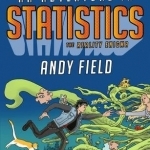
An Adventure in Statistics: The Reality Enigma
Book
Shortlisted for the British Book Design and Production Awards 2016 Shortlisted for the Association...

The Strategy Builder: How to Create and Communicate More Effective Strategies
Duncan Angwin and Stephen Cummings
Book
A visual and interactive guide to building and communicating strategies that actually work YOUR...
BookInspector (124 KP) rated Erotic Stories for Punjabi Widows in Books
Sep 24, 2020
I found the characters of this book very amusing, and at the same time very close to my heart. I loved how author put two opposites in the book; Nikki, who wants to live her life and make her own choices, and her sister Mindi-who still wants things done the traditional way. All the widows, who participated in this book, were really interesting and diverse personalities. They all had a story to tell, not only erotic one, but the one of their life as well. I do know quite a lot of South Asian people, and the way author described them in the book is very accurate. I am not including their fantasies, but the part of how they present themselves to society, is quite accurate. Respect of the family is the main value in Asian society, and all people try to maintain that. That’s why Nikki is kind of rebel against traditional values, which is sometimes quite shameful in the eye of the community. Everything in this book sounds very real and believable: characters, plot and the way author described places used in this book, it’s unbelievably accurate. I liked that author included more than one character in this book, and told the story from Nikki’s and her employer’s Kulvinder’s perspective. Kulvinder has huge influence in the book, with the tragic story of her daughter Maya, who died very young. Through the views of Nikki and Kulvinder, the story of the book unfolds very nicely, and keeps the suspense going.
The plot of the book is very original; nevertheless, it tells couple of different stories at the same time. Most of the action in this book happens in Southall, London. As the author said in the book, she lived in Southall, while she was studying at university. That explains why she wrote about this place with such detail. She described every corner and street with great accuracy, and beautifully presented the spirit of that place. How do I know? I visited that place many times, that’s why the similarity shocked me. This book tells not only the story of widow’s fantasies, but also involves murders, and many dark secrets of the society itself, and that really made the book amusing, twisty and hard to put down. The more Nikki gets involved with the widows, the more this story turns and thickens. Author discussed a lot of important topics in this book, such as: honour killings; family relations between parents and children, and what honour and respect of the family means in Asian society; immigration and adjustment problems; and many more. Author showed really nicely, that women, even after marriage remain women, and that after washing dishes, cooking and cleaning houses, they have their wishes and desires, which are not always fulfilled. Let me tell you one thing, those erotic stories they tell are really kinky, and has wide variety of action going on, so it is definitely not for young people to read.
So, as I mentioned before, and as it is obvious from the name of the book, it contains so foul language but at the same time is very comic and funny to read. This book is quite detailed, but it doesn’t make it boring, it helps to understand the situations better. I really liked, that the chapters were divided, so it was easier and more fun to read it. The ending of the book is nice and ended the book really well, by putting all characters at peace. To conclude, I really enjoyed this layered, funny and very beautifully written book and I do recommend reading it to everyone, who would like to have an insight of South Asian community, and get involved with those great topics which author brought up in this book.
Lee (2222 KP) rated Parasite (2019) in Movies
Jan 27, 2020 (Updated Jan 27, 2020)
Parasite tells the story of the Kim family, living in poverty in a cluttered South Korean basement. When we join them they are all desperately trying to find a spot in their home where they can pick up on a nearby public WiFi hot spot in order to connect their phones to Whatsapp (turns out, it's in the corner of the toilet!). Times are clearly tough and when the mother manages to get a small job putting together pizza boxes at home, the whole family chips in to help. They even have the pleasure of being able to view drunk men staggering down their street and urinating right outside the basement window while they try to eat at their dining room table.
A friend of the son comes to visit him one evening and tells him that he has to go away for a while. He currently has a job teaching English to the daughter of the wealthy Park family and wonders if Ki-woo would like to temporarily take over for him. Despite Ki-woo having no experience in tutoring, Ki-woo is assured by his friend that it will be easy money and, providing he can win over the confidence of the "simple" mother of the house, he'll have no problem. Sure enough, the confident Ki-woo, backed up by a certificate created for him in Photoshop by his sister, manages to land himself a regular tutoring job. Then, with the use of charm, lies and deception, Ki-woo soon manages to secure cushy jobs within the Park household for the rest of his family - art tutor, housekeeper and chauffeur - all being introduced as either old acquaintances or referrals from colleagues rather than family members. And so, the family find themselves having to lead double lives, juggling their own poverty stricken home-life together, along with the separate lives they lead while working for the Park family as work colleagues.
And that is really the basis of the movie. It's an elaborate scheme which, despite being deceptive and dishonest, is a lot of fun to see play out, and at times you really can get behind the Kim family and root for them. Things go comically wrong, in the kind of way that reminded me of a sitcom where a situation involves our stars getting themselves deeper and deeper into something, no matter how hard they try to go along with it and come up with a solution. And then things start to go horribly, even horrifically wrong, courtesy of a number of little twists and shocks.
Don't let the fact that Parasite is a subtitled movie put you off and believe all the hype you come across, as this is a must see movie and I was gripped, on the edge of my seat and thoroughly entertained for the most part. There is a very clear message played out concerning the rich/poor divide - obvious at times, when you see the contrasting effect that a serious storm has on each family - and much subtler at other times. There are some elements though, surrounding the ending of the movie, which I didn't quite buy into and that stopped this from being a full 10 out of 10 from me. I felt there was a clear point where this could and should have ended earlier, but still an incredible movie all the same.
Bob Mann (459 KP) rated Six Minutes to Midnight (2021) in Movies
Apr 4, 2021 (Updated Apr 4, 2021)
When half-German English teacher Thomas Miller (Eddie Izzard) applies for a suddenly vacant position, he is taken on to share the teaching duties with Rocholl and Ilse (Carla Juri). But in snooping into the activities going on there, he finds mystery and danger.
Positives:
This is a fascinating premise for a movie that will appeal to an older generation, along the lines of "They don't make them like this anymore". It has elements of the 'good guy on the run' that struck parallels with "The 39 Steps" for me.
It's great that the school is all based on historical fact. Miss Rochol did indeed run the school, as a part of a plan to infiltrate British high-society with pro-Nazi sympathies ahead of an invasion. In real-life, one of the pupils was the god-daughter of Heinrich Himmler and one - Bettina von Ribbentrop - was the daughter of the German foreign minister.
After a comic "Family Guy"-style set of production logos to kick off with (for a full one and a half minutes!!), the pre-title sequence is a superb scene-setter. What exactly is going on here? A frantic scrabbling in a bookcase. A pier-end disappearance. The school badge (a genuine reproduction!) with its Union flag and Nazi Swastika insignia. The girls performing a ballet-like ritual on the beach with batons. (This looks to be a cracker, I thought).
Judi Dench. Superb as always.
Chris Seager does the cinematography, and impressively so. Most of Seager's CV has been TV work, so it must be delightful to be given the breadth of a cinema screen to capture landscapes like this.
I like the clever title: "Six Minutes to Midnight". I assumed it was intended solely to reflect the imminence of war. But it actually has another meaning entirely.
Negatives:
For me, was a highly frustrating film. All of the great credibility and atmosphere it builds up in the first 30 minutes, it then squanders by diving off into sub-Hitchcock spy capers.
Izzard becomes a 'man on the run', and doesn't seem credible at that. (I appreciate the irony of this statement given that this is the man who ran 32 marathons in 31 days for charity!) But Izzard is built for distance and not for speed, and some of the police chase scenes in the movie strain credibility to breaking point. Another actor might have been able to pull this off better.
There's a lack of continuity in the film: was it perhaps cut down from a much longer running time? At one point, Miller is a wanted murderer with his face plastered on the front pages. The next, kindly bus driver Charlie (Jim Broadbent) is unaccountably aiding him and Rochol seems to have assumed his innocence in later scenes.
Various spy caper clichés are mined to extreme - including those old classics 'swerve to avoid bullets'; 'gun shot but different gun'; and 'shot guy seems to live forever'. And there are double-agent 'twists' occurring that are utterly predictable.
A very specific continuity irritation for me was in an 'aircraft landing' scene. Markers are separated by nine paces (I went back and counted them!) yet a view from a plane shows them a 'runway-width' apart. This might have escaped scrutiny were it shown just once. But no... we have ground shot; air shot; ground shot; air shot..... repeatedly!
Summary thoughts: This was one of the cinema trailers that most appealed to me over a year ago, in those heady days in the sunlit-uplands of life before Covid-19. It's a movie that showed a great deal of promise, since the history is fascinating. And there is probably a really great TV serial in here: showing the 'alternate history' consequences of these high-society German girls penetrating British society and steering the war in a different direction (screenplay idea (C) RJ Mann!) But the potential is squandered with a non-credible spy caper bolted onto the side.
So with "Six Minutes to Midnight", Downton-director Andy Goddard has made a perfectly watchable 'rainy Sunday afternoon' film, that I enjoyed in part for its 'old-school' quirkiness. But it's frustrating that all the promise couldn't be transitioned into a more satisfying movie.
(For the full graphical review, please check out the One Mann's Movies review here https://bob-the-movie-man.com/2021/04/04/six-minutes-to-midnight-a-39-steps-esque-thriller-but-not-quite-pulling-it-off/. Thanks).
ArecRain (8 KP) rated Monster High (Monster High, #1) in Books
Jan 18, 2018
This is a book meant strictly for pleasure reading for fantasy and novels alike. While it kept true to the high school novel feel, it also had enough fantasy to make it that much more interesting than just high school girls worrying about losing their boy toys. It was similar to any other young adult novel I have read except for the one factor making it completely different: it revolves around the descendents of monsters. If it wasnt for that, I probably would have hated this book. I have always loved everything to do with fantast monsters and creatures. The fact that Mattel created a doll series about it was cute, but the book made it enjoyable for an audience older than seven years of age.
Quite honestly, I am tired of all the criticism of this book. It is meant to be a light-hearted, moral teaching novel meant for young adults, therefore, it is meant to relatable by teens. All the slang that the students use is how the real world is, people. I am sorry if you dont understand their lingo, but its how kids are, especially high schoolers. They invent words that they think are cool and some tend to catch on. Melodys family is from Beverly Hills. Why wouldnt they have designer clothes? Frankie was born 15 days ago. What else would she wear but what magazines and the media tell her to, which just happens to be designer clothing. As for the celebrity names dropped, this is not in the leagues of Lewis or Tolkien. Few people will read this in 50 years when the current generation doesnt know who Lady Gaga or Justin Beiber is. This was meant for the generation here and now.
This is not a deep novel people. There is no great mission by amazing warriors meant to save the world. The romance is just that: cute teen romance. No sex and no deep involved feeling that are too complicated. If this novel was not grown up for you, then you probably shouldnt be picking up books from the young adult section. Try some Lukyanenko novels and then talk to me. Thanks.
Moving on. The books two main female characters are Melody and Frankie Stein. The description is a bit misleading, however. Frankie and Melody actually dont even really talk to each until the end. Before tragedy strikes, bringing them together, the two are lost in their own little worlds, hardly even concerned with each other. Both girls are focused on making it a new community and high school, while dealing with major crushes and vicious students. Each makes their own friends. Ones are psychotic back-stabbers that need to have cell phone service banned and barred. The others are true and stand behind her even if they dont agree with her.
The characters were adorable, crazy, funny, and had so much well character. It was easy to tell one from another and I absolutely loved reading about them interacting with each other. Most of the novel had me either laughing, or setting the book aside until I could get over my empathetic embarrassment. I found myself sympathizing with all the characters points of view even though none of them know the whole picture like the reader does. Not to mention, sharing Frankies frustration. I was with her 100% even though I kept telling myself her parents way was the safest. How could you not feel frustrated when everyone was telling her to have pride in what she was and the forcing who to hide what she was? Hypocritical much? I thought so.
Now to the only negative thing I have to say about this book: I wanted to continuously shut Melody down. I found it down right annoying that she thought she knew how Jackson (Dr. Jekylls grandson) and Frankie (Frankensteins granddaughter) felt about being outcasts just because she had a nose she considered ugly. Are you kidding me? Really? I thought this was a poor attempt by Harrison to give Melody and Frankie some common ground. Being made fun of because of your nose is nowhere near the devastation of being hunted down because your grandfather was a chemical addict or a stitched together living doll. Oh, I am sure that it was tragic enough for Melody, but how dare she say she understood what it was like. Melody was never in mortal danger for her difference, so please, honey, get off your self-righteous horse.
The main reason I loved this book so much was because it was so distracting. It was such a light and fluffy book about the simplicity that is high school life. It was refreshing from all these novels nowadays where the protagonist is the only person capable of saving the world, their loved, blah blah blah, while the protagonist is some immensely powerful being. Note to writers: that scenario is getting old real quick.
